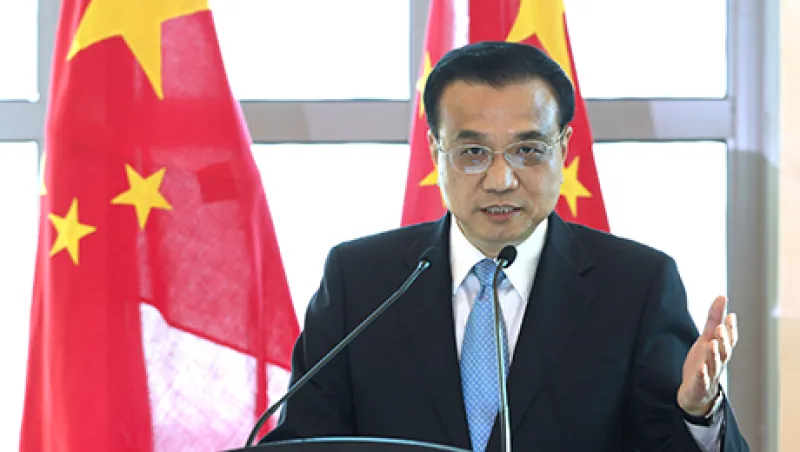Leaders in Beijing should turn to capital markets–based solutions — rather than aggressive military expansion — to resolve thorny territorial disputes with many of their neighbors. China’s recent banking initiative, the Asian Infrastructure Investment Bank (AIIB), just might be a template China can use to charm its way back into the hearts of leaders in capitals across Asia.
China has long claimed some 80 percent of the South China Sea, putting it at odds with many of its neighbors. On July 12 an arbitration court in the Hague linked to the United Nations ruled that China had no basis for a historic claim of sovereignty over much of the busy trade route and had, in fact, breached the Philippines’ rights through various island-building exercises. Infuriated with the decision that was initiated by a court case brought by former Philippines president Benigno Aquino III, leaders in Beijing dismissed the decision and called the ruling by the arbitral tribunal in the Hague “a farce.”
On July 18 China’s Ministry of Defense announced it was closing off parts of the South China Sea for military exercises, right in the middle of a three-day visit to Beijing by the U.S. Navy’s top officer, Admiral John Richardson, who was there to discuss the South China Sea dispute and ways to increase interactions between the two militaries.
China may not want to recognize the arbitration court. Nevertheless, its ruling lays out a precedent based on common sense: The South China Sea belongs to all Asian nations that border it and where the U.N. Convention on Law of the Sea, to which China is a party, clearly applies.
A lot is at stake for China, other Asia nations and even the U.S., which patrols the region to keep it safe for global trade. The root of the disputes is clearly economic, according to many Asian geopolitical experts, who note that although territorial in nature, numerous national claims arise from the desires of each of the neighboring states to extract resources in the deep ocean and seabeds surrounding the region’s thousands of islands. The waterways are widely thought to be rich in natural gas and marine resources, while also serving as major global shipping corridors.
Rather than aggressive chest thumping, however, China’s leaders should consider a financial solution to the crisis — and they don’t need think too hard to come up with one. In fact, they may have one already — and one that well may be a face-saving measure that gives them a graceful way to come out like a winner.
This year the Beijing-based AIIB will formally begin lending some of its $100 billion in founding capital. The AIIB, along with Shanghai-based multilateral New Development Bank and Beijing-based Silk Road Fund, will offer more than $200 billion to borrowers in various emerging markets to develop infrastructure. There is no reason China cannot lead its Asian neighbors to come together to form a multilateral lender that can offer financing specifically for resource extraction in the region’s seas.
Such an institution, hypothetically, could go by a name such as the Asian Resource Development Bank and lend to regional companies that represent their respective national interests. The shareholder structure and mechanics of such an institution can be easily negotiated within existing regional multilateral frameworks.
Since the early 2000s, the region has been coming together to resolve disputes and rivalries peacefully. For more than a decade, the ten members of the Association of Southeast Asian Nations have held regular discussions with China, Japan and South Korea about forming an East Asia Free Trade Area. Leaders from across the region have met every year — in what has become known as the ASEAN+3 grouping — to discuss the possibilities of forming a regional trade bloc. There is no reason the lingering resentment over the South China Sea dispute cannot be handled within the ASEAN+3 framework, and there is no better way than considering the formation of a resource-focused lender as a way to resolve sovereignty disputes across Asia.
China and its neighbors can each put up founding capital, and the bank could be run much like a corporate entity that hands out financing to corporate borrowers across Asia. Profits made by the bank could be split up among the shareholders or go back into the bank’s reserves to help finance future lending.
There is already evidence that a regional multilateral can promote peaceful development through finance: The Japan- and U.S.-led, Manila-based Asian Development Bank has been promoting a regional effort for development financing since 1966. No existing multilaterals, however, specialize in resource development. Asia is not short of capital and has the highest concentration of foreign exchange reserves in the world. Regional leaders coming together to form such an entity can easily pool funds to help the region wisely and sustainably develop its natural resources.
Even if leaders cannot immediately resolve their disputes in the South China Sea, their discussions about the formation of such a bank would at the very least help build a regional esprit de corps, deescalate tensions and promote long-term peace. Such a proposal, if initially put forth by leaders in Beijing, would certainly go a long way toward helping China win a diplomatic initiative and strengthen recognition regionally as the Asian giant that others admire — and need not fear.
Follow Allen Cheng on Twitter at @acheng87.
Get more on emerging markets.






